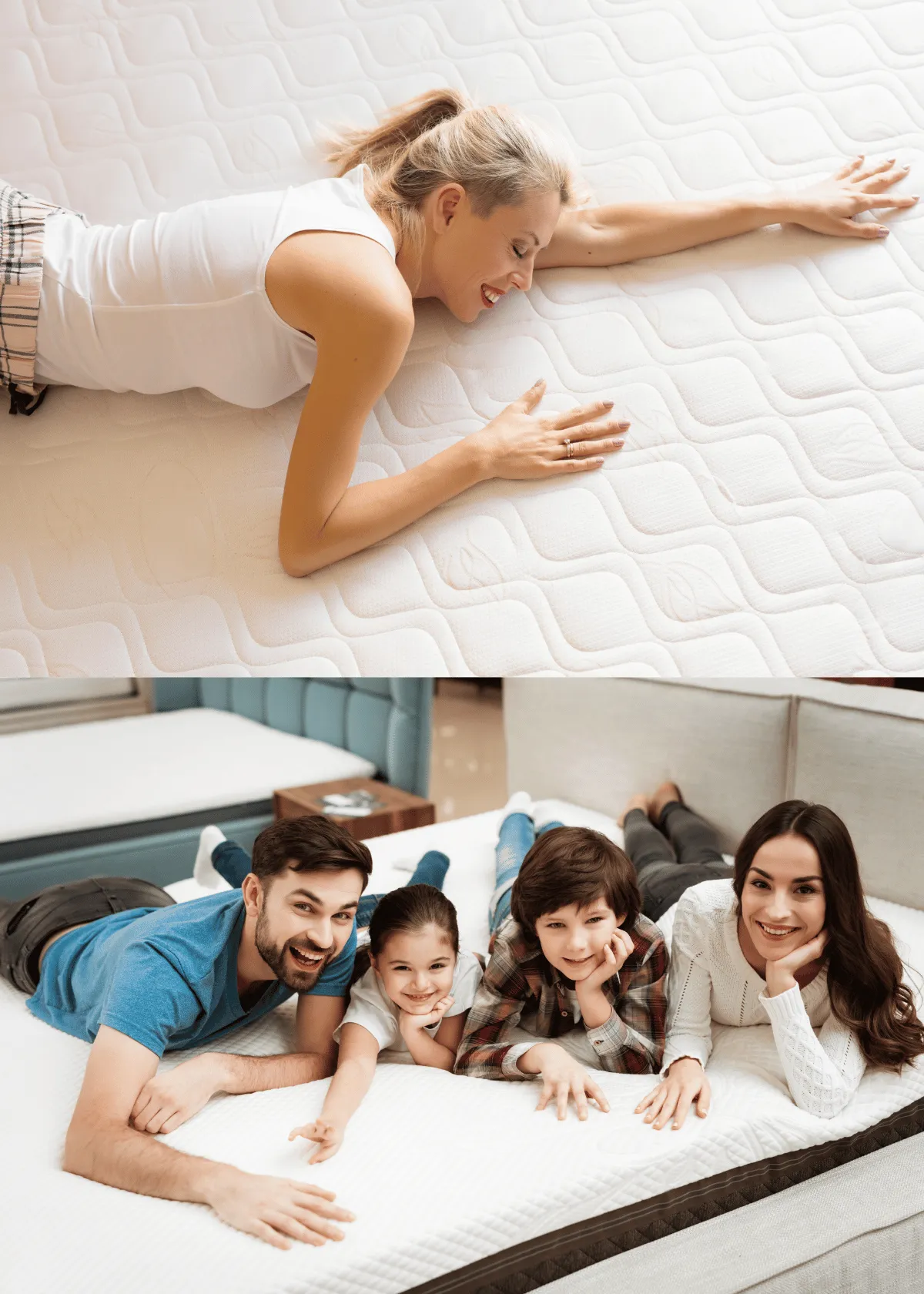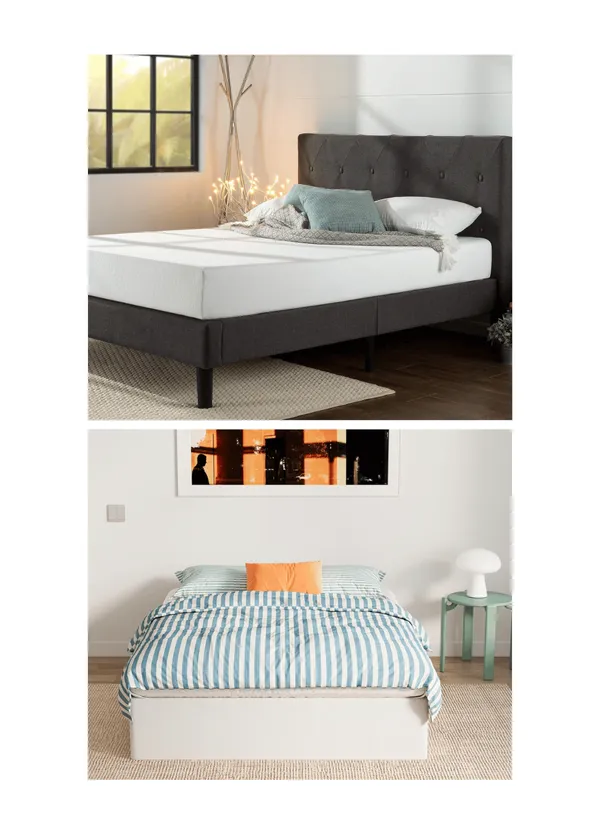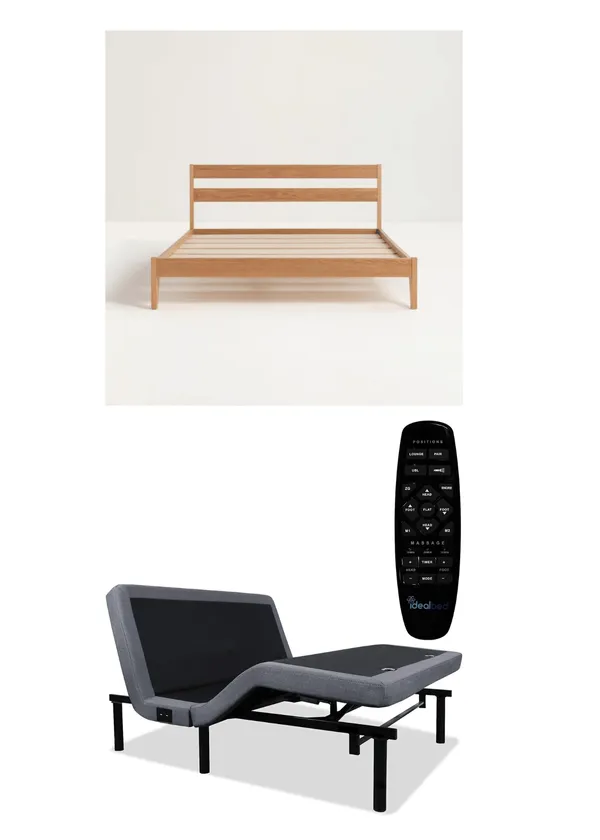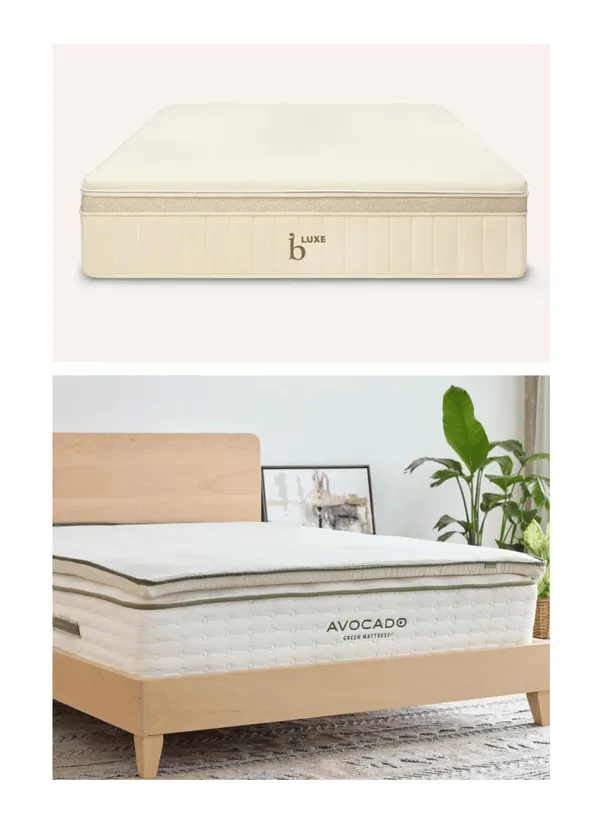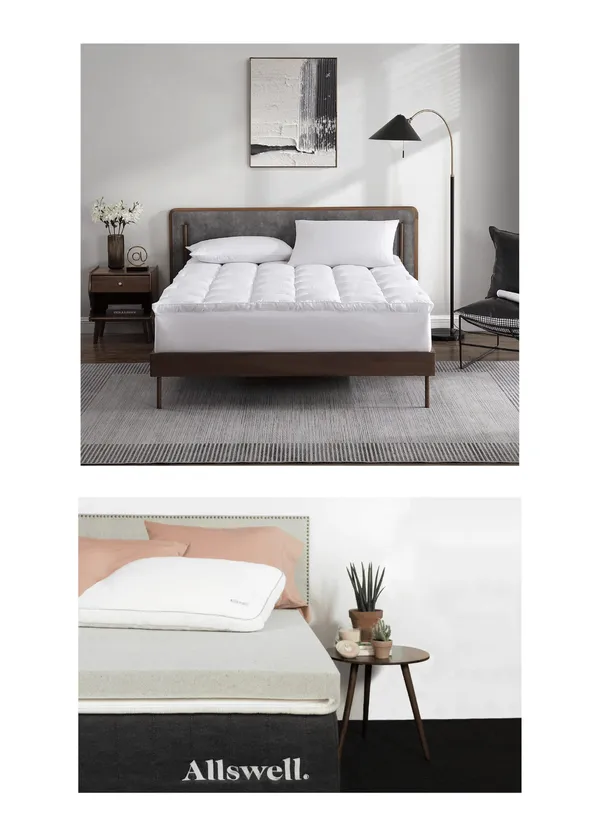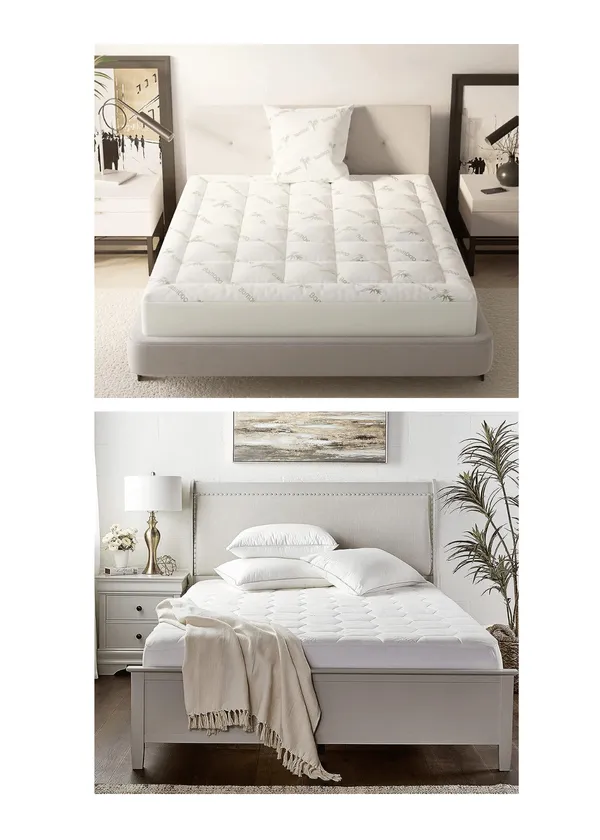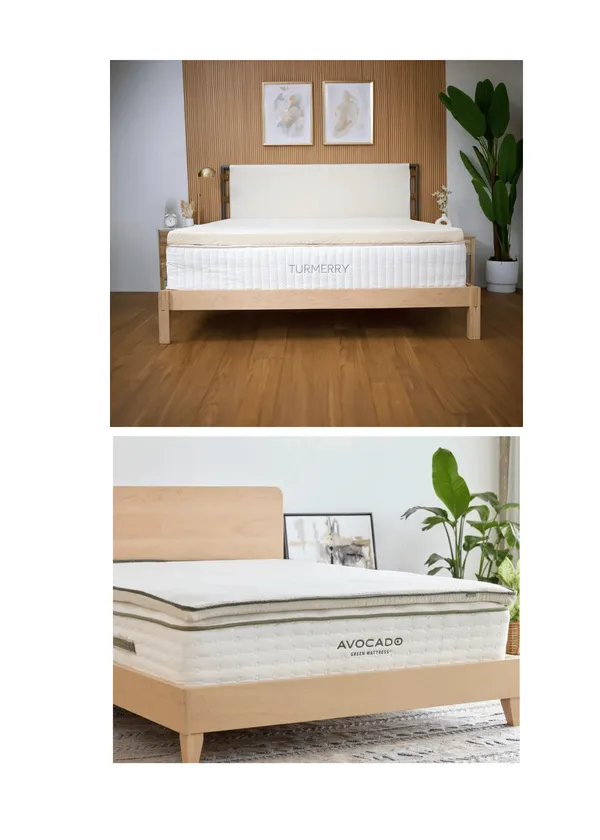(Last Updated: 05/24/2024)
Have you ever wondered if a firmer mattress leads to better sleep or if you need to replace your mattress every 8 years?
In the world of sleep comfort, myths and misconceptions are as abundant as the variety of beds themselves. They can easily lead you astray, potentially costing you money and a good night's sleep.
This post is here to guide you through the maze of misinformation. We'll illuminate the most common mattress myths and debunk those that have shrouded the mattress industry for far too long.
Keep reading to reveal the truth behind these myths and misconceptions and ensure you make the best sleep health decisions.
Myth #1: A Firm Mattress Is Better Than A Soft Mattress
Mattress Myths Debunked:
It's widely believed that the firmer the new mattress, the better it is for your back and overall sleep. This idea has led countless sleepers to opt for the most rigid and firm mattresses they can find, often overlooking personal comfort.
The Misconception that Firmer Mattresses are Best
There is no one-size-fits-all when it comes to new mattress firmness. The optimal firmness and best mattress hinge on your sleeping position, body type, and preference. While a firm, supportive mattress can support some people, others may find it uncomfortable.
The quality of a mattress varies wildly. So, whether they prefer soft or medium-firm mattresses to alleviate pressure point pain, the key is to find a balance between comfort and support that suits your needs.

Blissful Nights Split King Mattress
(Credit: Blissful Nights)
Myth #2: You Must Replace the Mattress Every 8 Years
Myth:
One of the most commonly heard mattress rules is the "8-year rule", which asserts that you must replace your mattress every eight years.
The Mattress Lifespan's Misconception
While it's true that a mattress won't last forever, the exact lifespan of a mattress can vary greatly depending on its material, quality, and how well it's been maintained. High-quality latex mattresses or high-density memory foam can often comfortably last beyond the 8-year mark.

Leesa Mattress
(Credit: Leesa)
Myth #3: One Size Fits All in the Mattress World
Mattress myths debunked:
The belief that one type of mattress suits everyone is another common myth. Many people assume that a universally 'perfect' mattress exists that will ensure a good night's sleep for every sleeper.
One Size Fits All Misconception:
Everyone has unique sleeping needs, preferences, and body types. Some might prefer the conforming feel of memory foam, while others might opt for the buoyancy of an innerspring mattress.
When choosing a mattress from a mattress retailer, it's important to consider personal comfort and support needs.

Amazon Basics Mattress
(Credit:Amazon)
Myth #4: Mattress Protectors Are Unnecessary
Myth:
Many people believe that mattress protectors are unnecessary, and they can sleep directly on their beds without protective coverings.
Misconception:
While it might seem like an additional cost, a mattress protector plays a crucial role in maintaining your mattress's longevity, it safeguards your mattress against dust mites, allergens, accidental spills, and general wear and tear.
Moreover, using a protector can help uphold the warranty of your new mattress, as some mattress warranties become void with any stains.

Ashely Sleep Mattress
(Credit: Ashely Sleep)
Myth #5: Mattresses Are the Primary Habitat for Dust Mites
Myth:
Today, these mattresses are the main breeding ground for dust mites, leading to fear and even drastic actions like frequently replacing beds or using excessive amounts of anti-dust mite products.
Misconception:
While it's true that a mattress can host dust mites, they are not the exclusive or even the primary habitat. Dust mites are found throughout the home, especially in areas with high humidity and dust, like carpets, other upholstery materials, and bedding.
Rather than frequently replacing your mattress, a more effective and economical approach to controlling dust mites is regular cleaning, using a mattress protector, and washing bedding in hot water to kill mites and remove allergens.

Classic Brands Mattress
(Credit: Classic Brands)
Myth #6: A Good Mattress Fixes All Back Problems
Mattress myths debunked:
It's a popular belief that investing in good soft mattresses can magically cure all back problems, and thus, people spend heavily on 'orthopedic' beds in hopes of a pain-free back.
The Misconception:
While a good new mattress with the right support can help alleviate some back pain issues, it's not a cure-all. Back problems can stem from many factors, such as poor posture, lack of exercise, muscle strain, or underlying medical conditions.
A common mattress myth is that all sleep discomfort stems from the mattress itself, not a structural defect in the body.

Sleep Innovations Mattress
(Credit: Sleep Innovations)
Myth #7: Flipping Your Mattress Extends Its Life
Myth: Many people grew up with the idea that regularly flipping your mattress can prolong its lifespan, keeping it comfortable and supportive for longer.
The Misconception:
While this practice was beneficial for double-sided beds in the past, it's only applicable to traditional beds and some modern mattresses designed for one-sided use.
These mattresses have specific comfort and support layers on one side, which would be compromised by flipping. However, rotating your mattress (turning it 180 degrees) can help even wear and extend your mattress's life.
Always consult your mattress' care instructions, but remember that the best way to extend the life of a mattress is to use a good-quality mattress protector and treat it with care.

Linenspa Mattress
(Credit: Linenspa)
Myth #8: Price Directly Correlates to Mattress Quality
Myth: There's a widespread assumption that the more expensive a new mattress is, the better its quality must be. Many shoppers equate a high price tag with superior comfort and durability.
The Misconception:
While it's true that quality materials and craftsmanship in most mattresses often come at a cost, a higher price sometimes guarantees better sleep or a longer mattress lifespan.
Some high-priced mattresses have non-essential features that significantly hike the price without a great night's sleep.

Lucid Mattress
(Credit: Lucid)
Myth #9: Sleep Hot? You Must Buy a Gel Memory Foam Mattress
Myth: For those who tend to sleep hot, investing in a gel-infused memory foam bed is the best way to achieve a cooler, more comfortable sleep.
The Memory Foam Mattresses Misconception:
Debunking the Cooling Misconception of Gel-Infused Mattresses
Hot sleepers often turn to gel-infused mattresses for their cooling properties when relieving pressure points. However, some sleepers experience minimal temperature differences. It's important to recognize that various factors influence sleep temperature, including bedding, room temperature, and pajamas. Alternative options like latex or natural latex mattresses and those equipped with built-in ventilation systems provide additional cooling benefits beyond gel-infused mattresses.

Nectar Mattress
(Credit: Nectar)
Unlocking Comfort: Pressure Point Relief and Even Surface Support
The misconception surrounding pressure points relief is that gel-infused beds are the sole solution for hot sleepers. In reality, hot sleepers can find maximum enjoyment and alleviate pressure point pain by exploring new sleep surfaces such as synthetic latex or natural latex mattresses. These options offer cooling benefits and ensure the entire surface compresses evenly, providing consistent support throughout the body.
Myth #10: Box Springs Are Outdated and Unnecessary
Myth: Box springs are often deemed outdated relics that have no place in modern bedrooms. Many people believe they're an unnecessary add-on to increase the overall cost of a new bed setup.
The Misconception:
While it's accurate to say that not all mattresses require a box spring, it's a misconception to categorize them as wholly redundant. For specific mattress varieties, particularly spring mattresses, a box spring can offer critical support and prolong the mattress's overall durability.

Novilla Mattress
(Credit: Novilla)
Conclusion: Mattress Myths Debunked
As we've navigated through various common mattress myths debunked, it's clear that misinformation can greatly influence our decisions when choosing a mattress.
The right mattress depends on many factors, including your body type, sleep habits, and personal comfort preferences.
Focusing on these aspects rather than falling for industry myths and misconceptions will likely lead you to a mattress that truly serves your needs.
Say goodbye to body impressions with a new sleep surface that reduces them, promoting regenerative sleep. Let your body relax in your favorite sleeping positions, knowing the bed is providing pressure point relief with precision.
We hope this guide to mattress myths has been helpful and enlightening, leading you towards better sleep and healthier nights.

Zinus Memory Foam Mattress
(Credit: Zinus)
Frequently Asked Questions
Is a mattress still good after 20 years?
While some high-quality mattresses may last beyond 10 years, it's rare for a mattress to remain supportive and comfortable after 20 years. The average lifespan is 7-10 years. Prolonged use can lead to sagging, less support, and potential allergen buildup.
Is it better to have a harder or softer new mattress?
Whether a harder or softer mattress is better depends on personal comfort and sleeping style. Side sleepers often benefit from softer mattresses, while back and stomach sleepers may find firmer or firm mattresses are more comfortable. Always prioritize spinal alignment and comfort.
Why is my mattress sinking after 2 years?
Mattress sinking or sagging after 2 years can result from poor-quality materials, excessive weight, or consistent use in the same mattress area. It's a sign of wear and tear, leading to discomfort and poor sleep quality.

